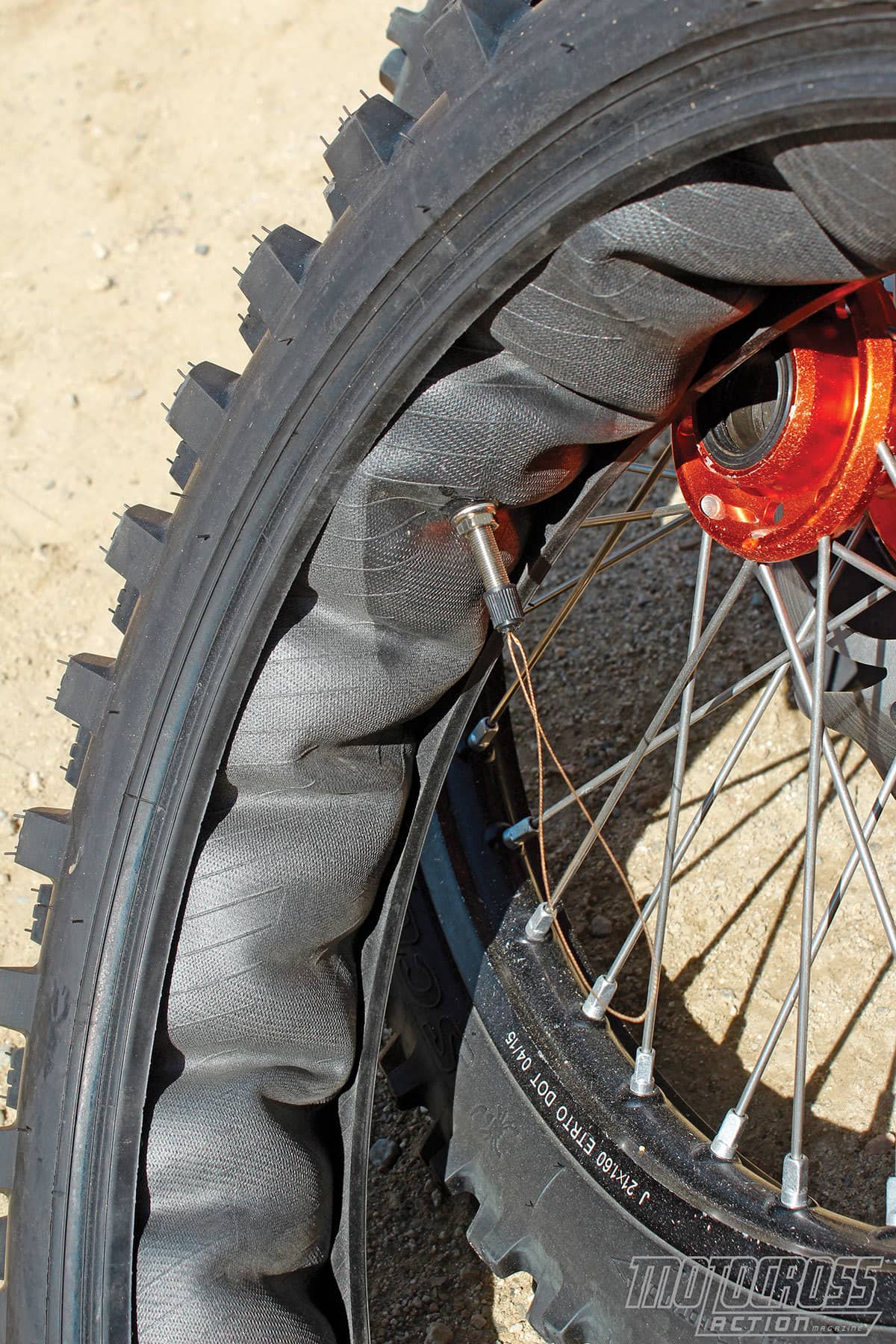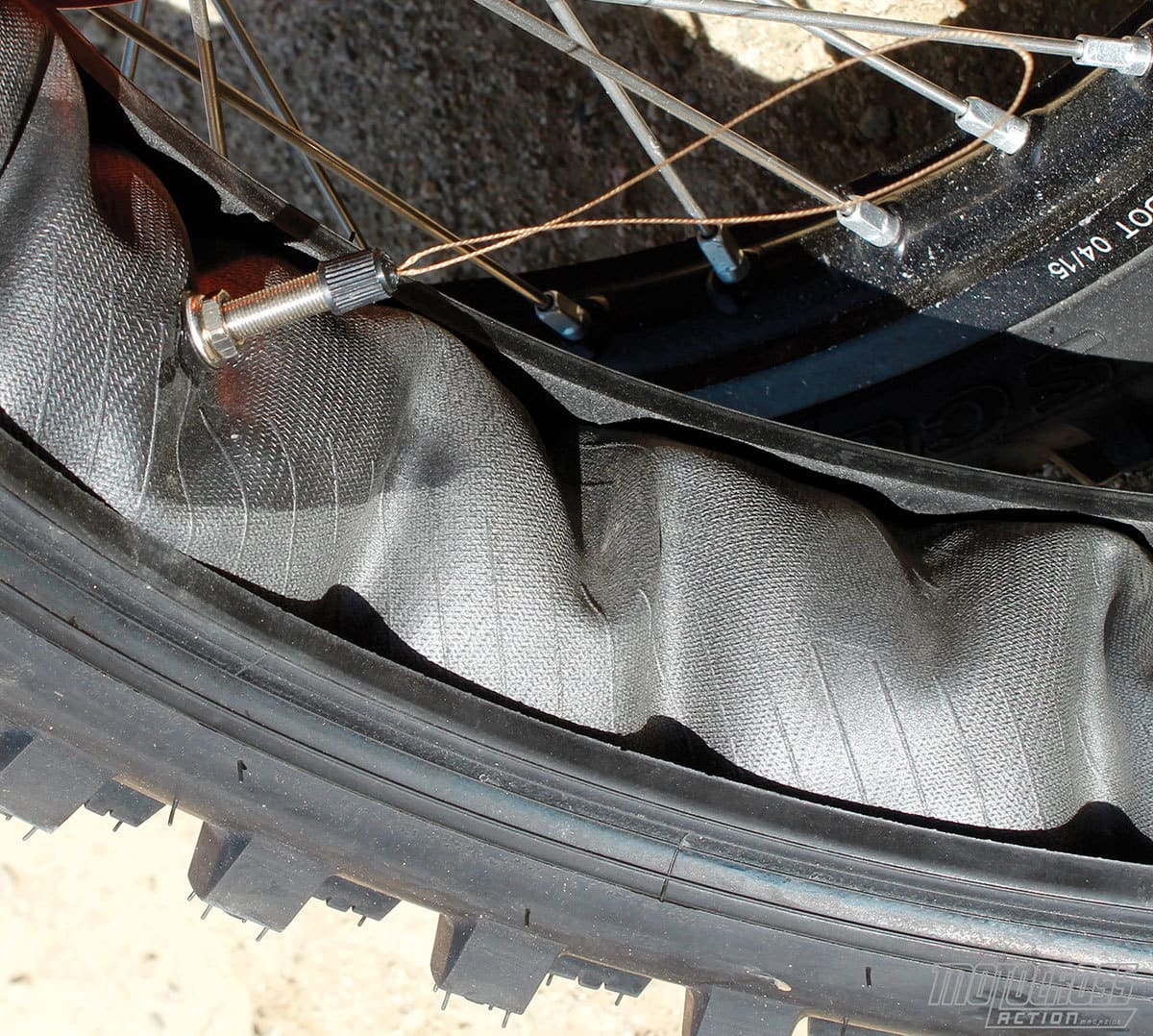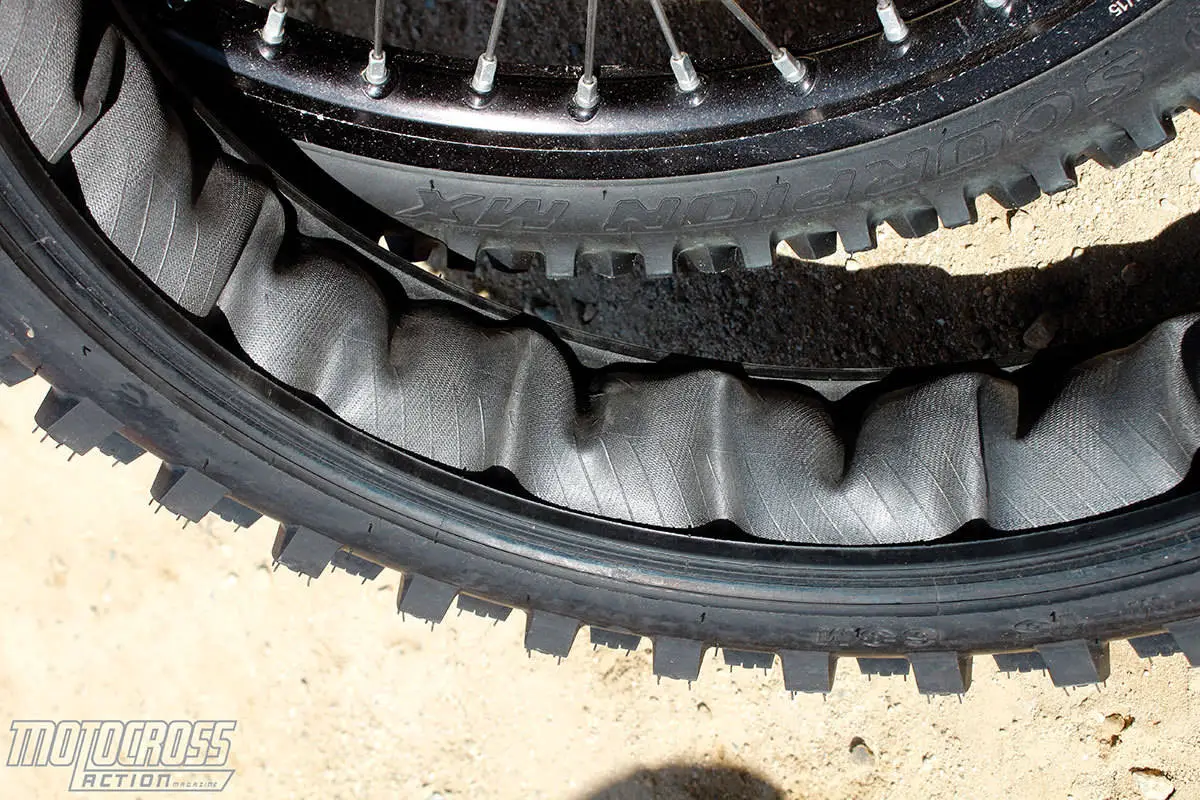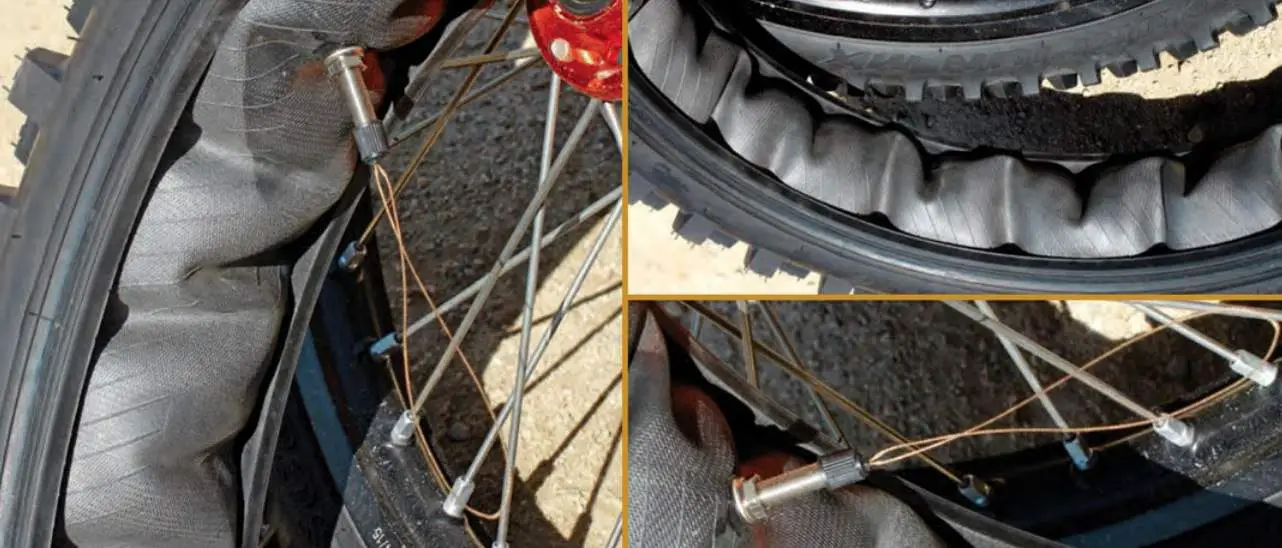MXA TEAM TESTED: HI-POINT ITT TUBELESS M15/M16 TIRES
WHAT IS IT? The major tire companies have tried to produce tubeless motocross tires for years, but have either given up or failed. So, it is surprising that boutique tire company as small as Hi-Point has found a new and creative way to design a tubeless offroad tire.
WHAT’S IT COST? $119.95 (rear), $93.95 (front).
CONTACT? www.motomandistributing.com or your local dealer.
WHAT STANDS OUT? Here’s a list of things that stand out with Hi-Point ITT tubeless tires.

(1) ITT. The acronym ITT stands for “Integrated Tubeless Technology.” ITT is a patented idea that uses a vulcanized layer of nylon fabric to form a tubular air chamber inside the tire. In layman’s terms, Hi-Point takes one ply of the tire’s carcass and lets it hang down from the inside of the tire. It is made of cloth, like the rest of the plies that form the inner structure of all tires, but it is vulcanized, essentially rubberized, so that this single ply can hold air. The single vulcanized ply completes the circle of the tire’s carcass so that the tire itself is the tube.
(2) Tube versus no tube. One of the inherent problems of tubeless motocross tires is that a normal air-filled tube becomes a second skin inside the tire. This means that it stiffens the sidewalls. Tubeless tire designers have to account for the added thickness of the tube and its resistance to flex when designing a tire. In previous tests of tubeless motocross tires, the MXA wrecking crew has had to add extra air pressure to make up for the flexiness of a tubeless tire. This air stiffens the tire, but at the expense of the resilience you seek from a tubeless design. The alternative to adding more air is to add more rubber down the sidewall to make the tire itself stiffer. This is what Hi-Point did to help solve the tendency of tubeless tires to wallow.
There are pluses to ITT technology. First, you can’t pinch flat a Hi-Point tubeless tire because the tube-like part of the ITT design is integrated into the internal cavity of the tire. Second, it fits any rim brand or style. Third, there is no friction between the inner tire carcass and the tube because the tube is part and parcel with the tire’s inner carcass.
(3) Unforeseen issues. Since the ITT design completes the circle of the tire, you cannot reach your hand inside to press the Schrader valve through the valve-stem hole. Hi-Point includes a valve cap with a string attached to it. The string is fed through the valve-stem hole to allow you to pull the Schrader valve through the hole from the outside. Good idea, but the first rim we tried the Hi-Point ITT tire on didn’t have a valve stem hole large enough for the valve cap to fit through. Our solution was to use a braided-steel valve-stem puller, which threads into the inner circumference of the valve stem. This is great, if you have a braided valve-stem puller. If you don’t, you will spend a lot of time fishing for the hole. Rocky Mountain ATV/MX sells a valve-stem puller for $7.

(4) Air pressure loss. We expected the Hi-Point ITT tires to lose air pressure when they sat in the workshop for a week between races. Surprise! We noticed a 1-pound drop, but we have normal tubes that lose that much also. Plus, we check our tire pressure before every race, so it wasn’t an issue for us.
(5) Performance. We ran a Hi-Point M15 rear with a M16 front. These are intermediate-to-soft compound tires with wide-knob spacing. The rears come in 110/80-19, 110/90-19 and 120/80-19 sizes. For offroad riders, there is a 110/100-18. These tires worked best on the softer side of the intermediate equation, as they tended to roll over on hardpack. We started at 13 psi, which was good for soft dirt, but went to 15 psi on hardpack. The rear tire worked adequately, but the front felt sketchy when side loads were applied. These are not direct competitors against a premium Dunlop MX3S, but, by the same token, Dunlop gave up on its tubeless motocross tire designs many years ago.

WHAT’S THE SQUAWK? New concepts always have bugs to work out. The ITT tire has a few.
MXA RATING: We love the technology. It has the potential to work and is already used on Innova mountain bike tires. We rate the rear as an acceptable tire for intermediate or softer dirt.





Comments are closed.